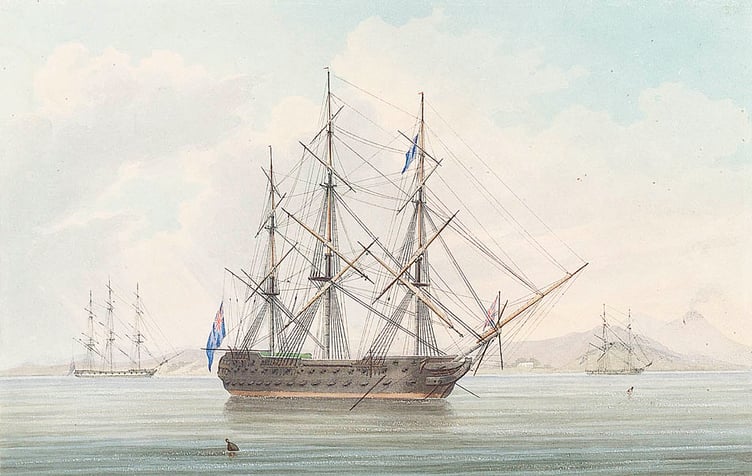The government have submitted plans (22/00978/B) to erect a plaque to commemorate the wreck of a 19th century warship which resulted in the loss of nine men.
It would be installed on the gable wall of Castletown Harbour Office, along with a cannon recovered from the sunken ship in the 1980s, mounted on a wooden carriage.
The plaque is set to be unveiled by Lieutenant Governor Sir John Lorimer in December.
Author Janet Gleeson, who published a book about the history of the RNLI, said that the tragedy was a motivating factor in Sir William Hillary’s drive to establish the national lifeboat organisation.
Among those calling for proper commemorations was former Chief Minister Tony Brown, chair of the recently formed HMS Racehorse Commemorative Group.
Mr Brown called the disaster ‘an important part of our Manx history, as well as British Naval history, which we believe is long overdue for recognition’.
He talked about how very few people in the island had heard about the tragedy, and the only artefact currently on display is a cannon in the Speaker’s Garden (of Castle Rushen).
Mr Brown added that the event was ‘a small but important incident that resulted in lots of changes’.
In addition to the plaque, the group plans for an event to be held to mark the 200th anniversary on December 14, and an exhibition to display recovered artefacts.
Of the nine people who died, three were men from Castletown who attempted to save the lives of those on the ship, which became wrecked when the captain mistook the light from Langness Lighthouse for Douglas bay.
After the ship’s lifeboats had ferried some of the crew to shore, five ‘intrepid’ local men made four trips out and back to rescue more.
On the last trip, with Suckling on board, the boat overturned in the surf, resulting in the drowning of six men from the Racehorse and three of the local rescuers.
These men, who had manned small fishing boats to undertake the rescue, were Robert Quayle, Thomas Hall and Norris Bridson.
The 18-gun sloop-of-war had been involved in action against the French Navy during the 19th century, including the capture of French warships.
She was of the Cruizer class, which was the most produced class of warships built by the British during the Napoleonic Wars at 110 vessels.
These proved to be fast sailers and very seaworthy, and possessed considerable firepower for such a small crew.
The Racehorse had been sailing from Holyhead in Anglesey, bound for the Isle of Man to meet with the Revenue cutter HMS Vigilant.
During a storm, she struck rocks at Skerranes, which is on the tip of the Langness peninsula.
In 1968, the wreck of the ship was located by a team of local divers and many artefacts were recovered and donated to national collections, which included brass railings and ammunition.

.jpeg?width=209&height=140&crop=209:145,smart&quality=75)

.jpeg?width=209&height=140&crop=209:145,smart&quality=75)

Comments
This article has no comments yet. Be the first to leave a comment.